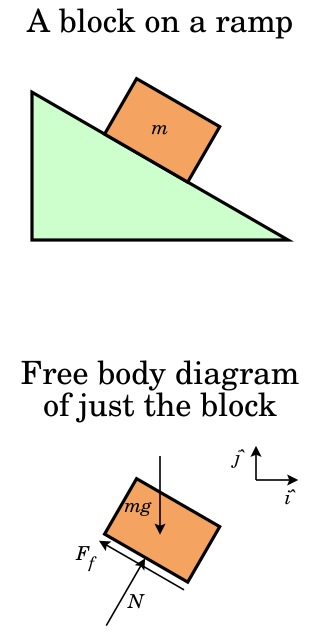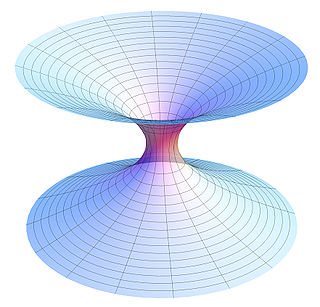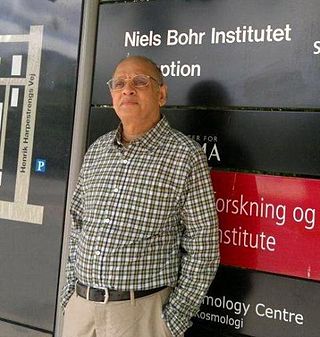
Condensed matter physics is the field of physics that deals with the macroscopic and microscopic physical properties of matter, especially the solid and liquid phases, that arise from electromagnetic forces between atoms and electrons. More generally, the subject deals with condensed phases of matter: systems of many constituents with strong interactions among them. More exotic condensed phases include the superconducting phase exhibited by certain materials at extremely low cryogenic temperatures, the ferromagnetic and antiferromagnetic phases of spins on crystal lattices of atoms, the Bose–Einstein condensates found in ultracold atomic systems, and liquid crystals. Condensed matter physicists seek to understand the behavior of these phases by experiments to measure various material properties, and by applying the physical laws of quantum mechanics, electromagnetism, statistical mechanics, and other physics theories to develop mathematical models and predict the properties of extremely large groups of atoms.
The following outline is provided as an overview of and topical guide to chemistry:

Physics is the natural science of matter, involving the study of matter, its fundamental constituents, its motion and behavior through space and time, and the related entities of energy and force. Physics is one of the most fundamental scientific disciplines. A scientist who specializes in the field of physics is called a physicist.

The Niels Bohr Institute is a research institute of the University of Copenhagen. The research of the institute spans astronomy, geophysics, nanotechnology, particle physics, quantum mechanics, and biophysics.

Computational physics is the study and implementation of numerical analysis to solve problems in physics. Historically, computational physics was the first application of modern computers in science, and is now a subset of computational science. It is sometimes regarded as a subdiscipline of theoretical physics, but others consider it an intermediate branch between theoretical and experimental physics — an area of study which supplements both theory and experiment.
Theoretical computer science is a subfield of computer science and mathematics that focuses on the abstract and mathematical foundations of computation.
The macroscopic scale is the length scale on which objects or phenomena are large enough to be visible with the naked eye, without magnifying optical instruments. It is the opposite of microscopic.

Emergentism is the belief in emergence, particularly as it involves consciousness and the philosophy of mind. A property of a system is said to be emergent if it is a new outcome of some other properties of the system and their interaction, while it is itself different from them. Within the philosophy of science, emergentism is analyzed both as it contrasts with and parallels reductionism. This philosophical theory suggests that higher-level properties and phenomena arise from the interactions and organization of lower-level entities yet are not reducible to these simpler components. It emphasizes the idea that the whole is more than the sum of its parts. Historically, emergentism has significantly influenced various scientific and philosophical ideas, highlighting the complexity and interconnectedness of natural systems.
Terrence Joseph Sejnowski is the Francis Crick Professor at the Salk Institute for Biological Studies where he directs the Computational Neurobiology Laboratory and is the director of the Crick-Jacobs center for theoretical and computational biology. He has performed pioneering research in neural networks and computational neuroscience.

A contact force is any force that occurs as a result of two objects making contact with each other. Contact forces are very common and are responsible for most visible interactions between macroscopic collections of matter. Pushing a car or kicking a ball are some of the everyday examples where contact forces are at work. In the first case the force is continuously applied to the car by a person, while in the second case the force is delivered in a short impulse.
Quantum weirdness encompasses the aspects of quantum mechanics that challenge and defy human physical intuition.

Édouard Brézin is a French theoretical physicist. He is professor at Université Paris 6, working at the laboratory for theoretical physics (LPT) of the École Normale Supérieure since 1986.
The quantum mind or quantum consciousness is a group of hypotheses proposing that local physical laws and interactions from classical mechanics or connections between neurons alone cannot explain consciousness, positing instead that quantum-mechanical phenomena, such as entanglement and superposition that cause nonlocalized quantum effects, interacting in smaller features of the brain than cells, may play an important part in the brain's function and could explain critical aspects of consciousness. These scientific hypotheses are as yet unvalidated, and they can overlap with quantum mysticism.

Søren Brunak is a Danish biological and physical scientist working in bioinformatics, systems biology, and medical informatics. He is a professor of Disease Systems Biology at the University of Copenhagen and professor of bioinformatics at the Technical University of Denmark. As Research Director at the Novo Nordisk Foundation Center for Protein Research at the University of Copenhagen Medical School, he leads a research effort where molecular-level systems biology data are combined with phenotypic data from the healthcare sector, such as electronic patient records, registry information, and biobank questionnaires. A major aim is to understand the network biology basis for time-ordered comorbidities and discriminate between treatment-related disease correlations and other comorbidities in disease trajectories. Søren Brunak also holds a position as a Medical Informatics Officer at Rigshospitalet, the Capital Region of Denmark.

Theoretical physics is a branch of physics that employs mathematical models and abstractions of physical objects and systems to rationalize, explain, and predict natural phenomena. This is in contrast to experimental physics, which uses experimental tools to probe these phenomena.
Pierre Baldi is a distinguished professor of computer science at University of California Irvine and the director of its Institute for Genomics and Bioinformatics.

Ravi Veeraraghavan Gomatam is the director of Bhaktivedanta Institute and the newly formed Institute of Semantic Information Sciences and Technology, Mumbai. He teaches graduate-level courses at these institutes. He was an adjunct professor at Birla Institute of Technology & Science (BITS), Pilani, Rajasthan, India (1993–2015).

Julia Mary Yeomans is a British theoretical physicist active in the fields of soft condensed matter and biological physics. She has served as Professor of Physics at the University of Oxford since 2002.

In physics, the hydrodynamic quantum analogs refer to experimentally-observed phenomena involving bouncing fluid droplets over a vibrating fluid bath that behave analogously to several quantum-mechanical systems. The experimental evidence has been disputed.
J. C. Séamus Davis is an Irish physicist whose research explores the world of macroscopic quantum physics. Davis concentrates upon the fundamental physics of exotic states of electronic, magnetic, atomic and space-time quantum matter. A specialty is development of innovative instrumentation to allow direct atomic-scale visualization or perception of the quantum many-body phenomena that are characteristic of these states.











